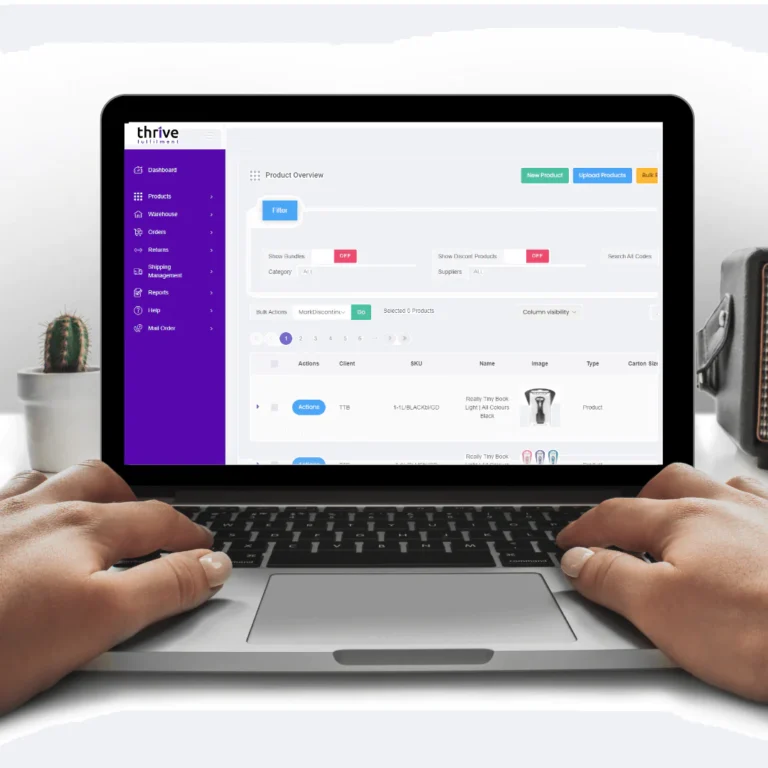Top 10 Benefits of Using Transport Management Software

Managing transport operations efficiently isn’t just about getting goods from A to B—it’s about doing it smarter, faster, and at the best possible cost. If you still rely on spreadsheets or outdated systems, you’re likely missing out on massive opportunities to streamline your logistics. This is where Transport Management Software (TMS) comes in.
Whether running a small fleet or managing large-scale distribution, a TMS can transform how you handle shipments, costs, and communication. Let’s break down the top benefits of this software for any logistics-focused business.
Lower Transportation Costs
One of the most significant advantages of transport management software is cost savings. With real-time data and advanced analytics, you can optimize routes, consolidate shipments, and negotiate better rates with carriers. Many systems also integrate with freight marketplaces, giving you access to competitive pricing and alternative transport options. The result? Fewer empty miles, lower fuel costs, and improved freight spending efficiency.
How TMS Helps Cut Costs:
- Route Optimisation – Reduces unnecessary mileage and fuel consumption.
- Carrier Rate Comparisons – Find the best shipping rates from multiple providers.
- Freight Consolidation – Groups shipments together to lower costs per load.
- Automated Load Assignments – Matches shipments to the most cost-effective carrier.
- Fuel Tax Reporting – Helps identify areas where fuel tax savings can be applied.
Better Route Optimisation
A well-implemented TMS can analyze traffic patterns, weather conditions, and delivery windows to suggest the most efficient routes. Instead of relying on manual planning, you get AI-powered route suggestions considering fuel consumption, delivery priorities, and potential delays. This means drivers spend less time in traffic, and deliveries reach their destinations faster.
Real-Time Shipment Tracking
Gone are the days of wondering where your shipments are. A TMS provides real-time tracking for every truck, container, and parcel in your supply chain. Customers and stakeholders can access live updates, reducing the number of “Where’s my order?” inquiries. Plus, with GPS integration, you can respond proactively to delays, reroute shipments, or notify recipients of any changes in delivery times.
Stronger Compliance and Documentation
Transport regulations constantly evolve, and keeping up with compliance requirements can be challenging. A TMS helps automate paperwork, from driver logs and fuel tax reports to customs documentation for international shipments. It ensures that every movement meets legal requirements, reducing the risk of fines or disruptions.
Improved Carrier Management
Working with multiple carriers can be a logistical headache, but a TMS simplifies this process. You can compare carrier performance, track rates, and automate load assignments based on cost, reliability, and service levels. It also makes maintaining strong relationships with transport providers easier by offering data-driven insights into their performance.
Faster Order Fulfilment
With seamless integration between your transport management system and other business tools—such as warehouse management software—orders move through the supply chain faster. This means quicker dispatching, fewer delays, and an overall boost in customer satisfaction. This can make a huge difference for businesses handling eCommerce or retail logistics.
How TMS Improves Order Fulfilment:
- Automated Order Processing – Reduces manual errors and speeds up shipping times.
- Warehouse Integration – Ensures stock levels and shipments align smoothly.
- Real-Time Updates – Keeps teams and customers informed of delivery progress.
- Faster Load Planning – Reduces downtime between order confirmation and dispatch.
- Last-Mile Delivery Coordination – Ensures deliveries arrive promptly with minimal delays.
Enhanced Customer Experience
A well-run logistics operation leads to happier customers. You build trust with clients and improve brand reputation with accurate ETAs, proactive notifications, and faster deliveries. Many TMS platforms even offer self-service portals where customers can track orders, reducing inbound support requests.
Automated Freight Auditing and Cost Control
Freight invoices can be complicated, and manual auditing is time-consuming and prone to errors. A TMS automates this process, flagging discrepancies, ensuring correct rates are applied, and even handling dispute resolutions. This means fewer billing errors, reduced overpayments, and clearer visibility into transport expenses.
Scalability for Business Growth
As your business expands, managing transport logistics manually becomes impossible. A TMS is built to scale with you, allowing you to add new carriers, expand to different regions, and handle growing shipment volumes effortlessly. Instead of constantly adjusting operations to keep up with demand, your software evolves with your needs.
Better Sustainability and Fuel Efficiency
With increasing pressure to reduce carbon footprints, businesses focus on greener logistics. A TMS helps by optimizing routes to reduce fuel consumption, reducing empty miles, and suggesting alternative transport modes like rail or shared freight options. By improving efficiency, companies save money and contribute to sustainability efforts.
Why Transport Management Software is Worth It
The logistics industry is becoming more complex, but the right software can simplify it. A TMS doesn’t just save money—it boosts efficiency, improves customer satisfaction, and helps businesses stay competitive. Whether you’re dealing with local deliveries or global freight, the benefits of using transport management software make it an essential tool for any modern supply chain.
Do Read: Is Faxing Dead? Not Even Close—Here’s Why Online Faxing Is Booming






